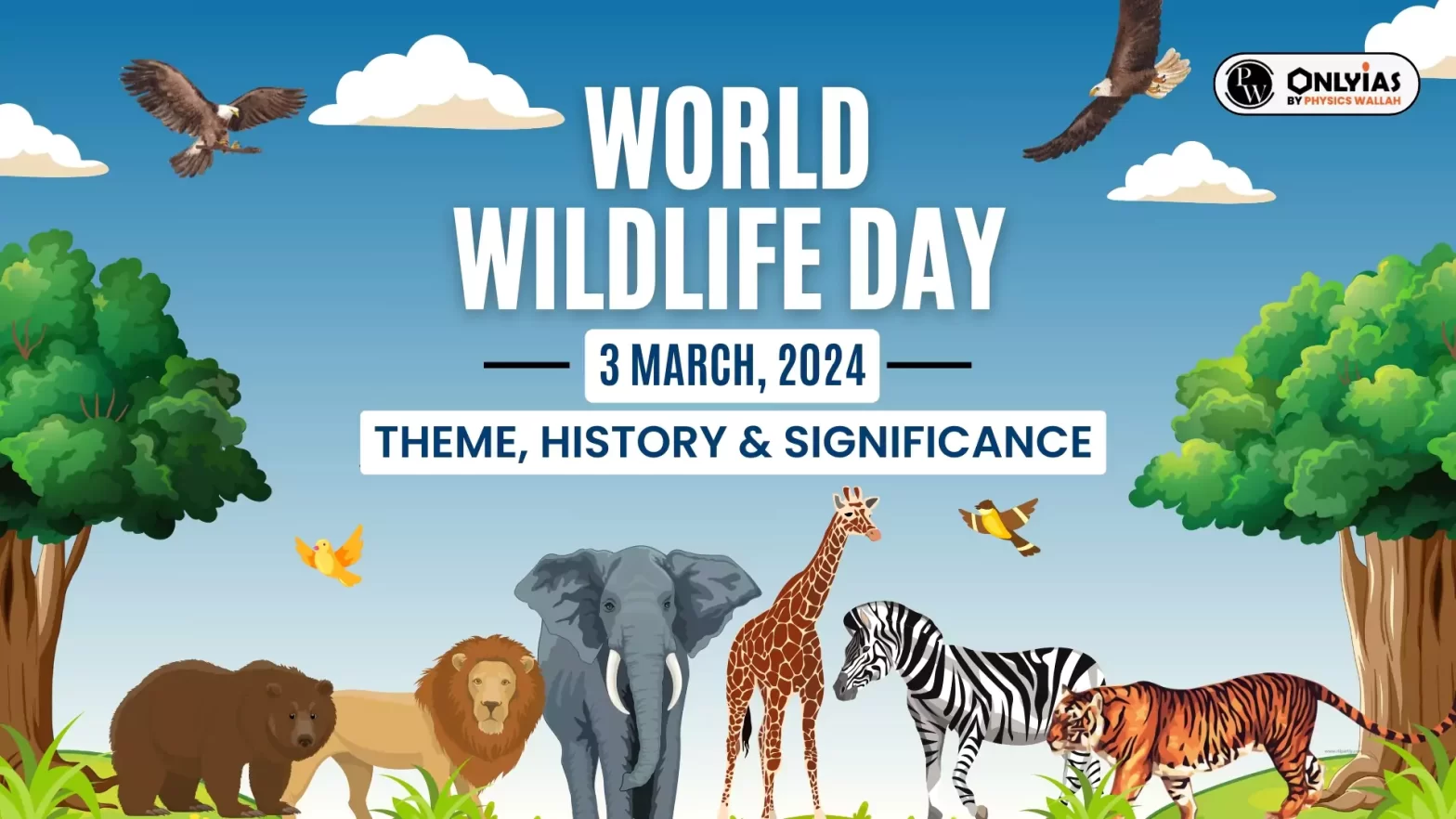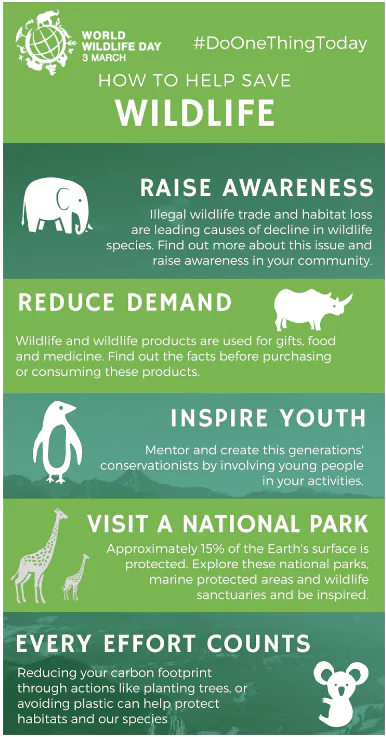Explore the significance of World Wildlife Day, its 2024 theme 'Connecting People and Earth,' and the history of the Convention on International Trade in Endangered Species.

World Wildlife Day, observed annually on 3 March, is a global event that highlights the importance of wildlife conservation and celebrates the diverse array of species inhabiting our planet.
| Year | Theme |
| 2023 | “Partnerships for Wildlife Conservation” |
| 2022 | “Recovering key species for ecosystem restoration” |
| 2021 | “Forests and Livelihoods: sustaining people and planet” |
| 2020 | “Sustaining all life on earth” |
| 2019 | “Life below water: for people and planet” |

Convention on International Trade in Endangered Species of Wild Fauna and Flora (CITES) 1973
Objective of CITES
Classifications of CITES Appendix
|
It provides a platform to highlight the intrinsic value of wildlife and the urgent need to protect it from various threats such as habitat destruction, climate change, poaching, and illegal wildlife trade. It serves as a call to action to promote sustainable practices that can help preserve biodiversity and protect wildlife habitats for future generations.
World Wildlife Day is celebrated through various events and activities organized by governments, non-governmental organizations (NGOs), conservation groups, schools, and communities worldwide.
World Wildlife Day is a time to celebrate the beauty and diversity of wildlife, while also recognizing the challenges facing many species around the world. By raising awareness, promoting conservation efforts, and advocating for sustainable practices, we can all contribute to protecting wildlife and preserving our planet for future generations to enjoy.
| Must Read | |
| NCERT Notes For UPSC | UPSC Daily Current Affairs |
| UPSC Blogs | UPSC Daily Editorials |
| Daily Current Affairs Quiz | Daily Main Answer Writing |
| UPSC Mains Previous Year Papers | UPSC Test Series 2024 |
An annual global event on March 3, promoting wildlife conservation and celebrating Earth's diverse species.
"Connecting People and Earth: Discovering Innovations for Wildlife," focusing on digital innovation in conservation.
Proposed by Thailand in 2013 to promote awareness of wild animals and plants globally.
Protects endangered plants and animals, ensuring international trade doesn't threaten their survival.
Highlights wildlife's value and threats, urging action for sustainable practices to protect biodiversity and habitats.

<div class="new-fform">
</div>
